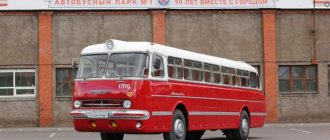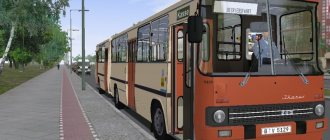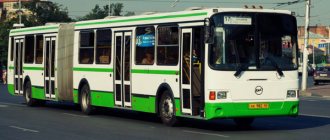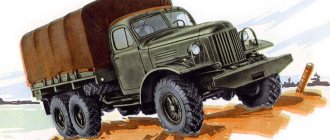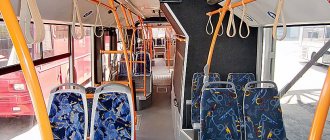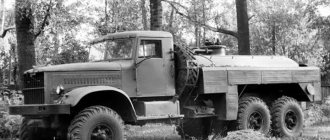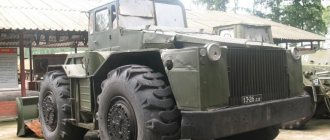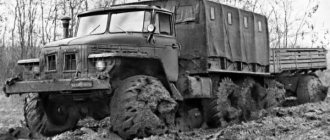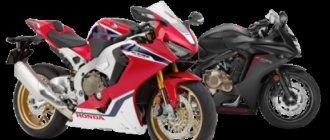Those who were born in the USSR in the 50-70s of the last century remember very well the long yellow Hungarian buses of the Ikarus brand, which, bending bizarrely, overcame sharp turns, since they constantly traveled on them, paying 5 kopecks for travel (some I also traveled for free - as a “hare”).
This is how the division of labor worked within the world system of socialism. Hungary supplied Ikarus buses to all countries that are members of the CMEA (Council for Mutual Economic Assistance), as well as to many African countries and individual European countries (Sweden, West Germany, Finland and a number of others). It is interesting that, as a rule, buses of the same model were delivered to different countries in different “colors”. Later, when the Ikarus brand (more correctly pronounced “Ikarush” with the accent on the first syllable) became known throughout the world, joint ventures were organized in the developed industrial countries of North America, as well as in Cuba, North Korea and Indonesia.
History of the brand
And it all began at the very end of the century before last with a small workshop in Budapest (Austria-Hungary), which was founded by Imre Uri. After 30 years, this company began producing bus bodies, and under his sons, 1,000 buses were assembled in 1939.
After the end of World War II, the company was nationalized and, merging with JSC Ikarus, retained the name of the latter. This company began its path to world fame in 1962 after the transfer of the plant in Székesfehérvár to it. This plant was specially built for the production of Ikarus buses of the 200th model. The overwhelming majority of city and intercity buses were supplied to the Soviet Union. With its collapse, the company, naturally, having lost its sales markets, curtailed almost all of its production and was divided into two - according to the number of factories (Budapest and Székesfehérvár), which carried out individual orders.
In the penultimate year of the last century, the Ikarusbus group tried to breathe “life” into them, but failed. In 2007, the EAG company (plant in Budapest) was officially declared bankrupt, and in Szekesfehérvár, surviving “from bread to kvass”, exists today in conditions of fierce competition within the European Union.
"Ikarus" up to 250 model
In 1953, production of intercity buses model 55 with a carriage-type body began, and a year later the Ikarus-Lux.
These were very comfortable buses for those years and were produced (with minor improvements) for two decades. Drivers called the Ikarus-Lux a “vacuum cleaner” for its futuristic (cigar-like profile, square face), headlight above the windshield and noisy engine. 11 meters long, it had a six-cylinder diesel engine with 170 hp, which was located at the rear. This ensured that there was no corresponding smell in the cabin, which was common when subsequent models of this brand were used in Russia. Thirty-two soft seats, a suspension with hydraulic shock absorbers and a top speed of 98 km/h provided comfortable travel conditions. These buses were very reliable and lasted up to a million kilometers without major repairs.
In 1966, the production of the super-capacity, more than 16 meters long (there were countless people jammed there) city bus “Ikarus” model 180 began, which lasted seven years. It was white with a red stripe, with a carriage-type body that had four passenger doors and an accordion vestibule, as well as body regulators powered by compressed air. The engine is also a six-cylinder diesel, 192-horsepower Raba-MAN. The maximum speed (63 km/h) in urban conditions was almost impossible to achieve. There was little comfort in this model, for which in the USSR it was nicknamed “cattle carrier”, and for its appearance it was also called “accordion”. This model was replaced in the 70s of the 20th century by the Ikarus-280.
Magnificent "wanderer" - "Ikarus-256"
The Ikarus-256 model was produced for half a century, which first came off the assembly line in 1977. It was a slightly improved Ikarus-250 - more comfortable and a meter shorter (length 11 meters). The capacity of the Ikarus bus was designed to transport tourists, including foreign ones, and it had 45 soft seats. The last five seats are combined into a “sleeping” sofa, which is slightly raised (two steps) above the rest of the bus interior. An undoubted innovation for that time was the presence of a TV mounted to the right of the driver. In contrast to all this splendor were the luggage racks that this model inherited from the Ikarus-255 (fabric mesh on the frame).
The design remained unchanged. The body is monocoque, carriage type, the engine is rear-mounted and more powerful than on previous models (250 l/s). The luggage compartment has become significantly larger. The location of the company logo and the number 256 is above the air intake. There was a panoramic, two-part, huge windshield, rear-view mirrors of the “hare ears” type and powerful two pairs of headlights with lens coating.
Regular Ikarus 256 Intourist: technical specifications, interior and other parameters
Ikarus 256 is a bus mass-produced by the Hungarian company Ikarus from 1977 to 2002. This model was almost completely unified with the Ikarus 250 model, but the body length was one meter shorter and amounted to 11 meters. Compared to the Ikarus 250, the 256th model became much more comfortable and had many new features and functions inherent in modern tourist buses. The bus can operate both as an intercity bus and as a tourist bus. Detailed information is provided in a separate article.
Model 260
For a third of a century, until the second year of our century, the production of the Ikarus-260 bus continued. Interestingly, this model had 30 modifications (versions were even produced for mountainous regions). Unlike other buses of this company, the color of the Ikarus delivered to the USSR was yellow.
Also, for the first time, air suspension was used, which was previously mechanical and “burned out” after a year of driving. The body is standard, with three passenger doors (four folding doors). The engine is located under the floor, the cabin is heated both from the engine cooling system and by air. Capacity up to 107 people, seating – 22. At full capacity, the weight of the bus could exceed 15 tons. The maximum speed of 66 km/h was not allowed within populated areas.
Ikarus 397
The Ikarus 397 is a tourist bus produced in small series in Hungary from 1993 to 1995.
The model was developed by the Ikarus division of Egyedi Autóbuszgyár (EAG), which specialized in “non-mass” buses. A special feature of the model was its spectacular and original design with a high-mounted passenger compartment - like double-decker buses. At the same time, the car did not have a first “floor”.
Tourist bus Ikarus 397
The buses were based on three-axle Scania or Raba chassis in accordance with customer preferences. In the first case, the Ikarus 397 was equipped with a Scania engine, in the second - with a MAN D2866 diesel engine with a power of 370 hp. With. The bus was designed to carry 63 passengers.
A total of 47 copies of the model were produced. The buses operated in Hungary, as well as in Turkey, Greece, Germany, the Czech Republic and Finland.
Video
Modular design
The Ikarus-280 bus replaced the Ikarus-180, which had already exhausted its service life. The main idea of this model was its modular design, so it had more than fifty modifications. It was possible to change everything in it - from the length of the bus itself (maximum 18 meters), the number of doors (from one to four) to almost any brand of engine and type of transmission.
In outline it was already a regular parallelepiped with a rounded frontal view. The engine produced 190 l/s, was located under the floor, and had a service life of half a million kilometers before major repairs. Large areas accommodated more than one and a half hundred passengers, with 35 seats. The floor was covered with a rubber carpet. Smooth running (a distinctive feature of the Ikarus-280) was achieved by a large number of air cylinders. The drum brakes are equipped with a pneumatic drive.
What technical characteristics does the Ikarus bus have:
- Dimensions (in centimeters) – 1650 (length), 250 (width), 316 (height).
- Number of seats/maximum capacity – 32 units/168 persons.
- The body is load-bearing, carriage type, modular.
- Engine - different types of diesel engines could be used (mostly).
- Compression – 17.
- The maximum power indicator is 192 horsepower.
- Speed of movement (in kilometers) - 66.5.
- Base (in centimeters) – 540 by 620.
- Wheel track (in centimeters) – 200 (front), 183 (middle), 200 (rear).
- Turning radius (in centimeters) – 1050.
- Ground clearance (in centimeters) – 35.
- Maximum fuel fill (in hectolitres) – 25.
- Maximum weight (in kilograms) – 12540.
What does the Ikarus bus look like? The reader can see his photo in our article.
Driver's seat
Steering – type ZF S6-90U. The driver's seat is practically no different in style and functionality from the passenger seat. The only caveat is the height adjustment. The driver's workplace is not separated from the passenger compartment in any way, except for a small glass wall. The instrument panel is characterized by its large size and good readability of all sensors: speedometer, tachometer, voltmeter, and fuel level indicator.
Delivery of Ikarus to the USSR and post-Soviet space
As mentioned above, almost all Ikaruses were sent for operation in the USSR. Firstly, to pay off oil and gas supplies, and secondly, it was taken into account that in the 70s of the last century its population exceeded a quarter of a billion people. The peak of deliveries occurred at the end of the 80s of the 20th century, and in total in the second half of this century (including deliveries to the renewed Russia), more than 140 thousand copies of various models and modifications arrived to us. In addition, in the “dashing” nineties, the Ikarus bus was assembled in Moscow, Kurgan and Arzamas. The last batch was delivered to the Republic of Tajikistan in 2002.
"Ikarus" - an accordion, especially under operating conditions in the USSR, had the following negative effect. Some of the equipment was located under the floor of the passenger compartment, and after frequent repairs, which were carried out by Soviet rather than careful Western specialists, the seals no longer prevented the penetration of soot and exhaust gases into the cabin, for which the buses began to be popularly called “gas chambers.”
This year marks the half-century anniversary of the start of deliveries of the Ikarus-256 bus to Moscow. Mosgortrans has a bus of this model that is still working. He is registered in Novokosino, where the fourth park is located. He has already covered 700 thousand km. (seven stars on board) and continues to work smoothly. Another such specimen works in the working village of Sapozhok, Ryazan region.
Modifications
produced in small quantities:
- Low-floor, for work at airports, fourteen-meter “Ikarus-290”. The 280th model was also used for these purposes.
- One-and-a-half-story "Ikarus-270".
- Bus "Ikarus" 254 models with a high interior for intercity routes.
- 3-section “Ikarus-293”, 23 meters long.
dimensions
The car, even by today’s standards, has impressive dimensions:
- length 12000 mm;
- width 2500 mm;
- height 3200 mm;
- wheelbase 6330 mm;
- ground clearance 350 mm.
The distance between the wheel axles is large, and therefore outwardly the model did not seem too large. The popular Ikarus 250 bus was a tourist version, so luggage compartments were provided on the right and left. Their volume was 10.6 cubic meters. m in total from two sides. The compartments were opened manually using a handle or a special button.
"Ikarus" in the memory of the peoples of the USSR
Characteristics of the Ikarus bus:
- Elderly people generally have good memories of Ikarus buses. They were spoiled a little by the fact that they had to ride standing, often inhaling the smell of burning, and in the winter, even in the cold.
- Drivers have always been delighted with these buses. Convenient workplace, excellent visibility and dashboard, easy access to the main components directly from the cabin.
- But, despite a sufficient number of shortcomings and outright negativity when using Ikarus buses, they coped with the main task of transporting an innumerable number of passengers in the vast expanses of the USSR.
As recognition of these merits, two monuments were erected to the bus of this brand in the cities of Gomel and Voronezh.
About the manufacturer, production features
Founded in 1895 as a forging and carriage workshop, the company was actively developing, creating new solutions for comfortable and safe passenger transportation. The company's specialists developed and produced vehicles that meet current standards. In addition, the plant employees focused on developing non-standard vehicles for that time. The manufacturer was the first to propose many now common solutions : a bus with a monocoque body, modular design technology.
Bus Ikarus 60. Photo Wikipedia
Using high-quality and reliable components, testing finished models, making (if necessary) changes for modernization - all this allows us to offer customers equipment with a wide range of advantages . The main positive characteristics are:
- long service life, which can be verified by seeing operating machines that were produced 20-30 years ago;
- reliability;
- unpretentious operation;
- competent interior layout, optimal for each individual type of model.
Suburban/intercity bus Ikarus 66. Photo Wikipedia
Despite the continuation of activities in the production of passenger vehicles, the article focuses on models of past years . Since the heyday of the enterprise occurred in the second half of the 20th century. However, do not forget that the operating principles have been preserved, the company continues to offer reliable, safe, comfortable vehicles that meet the latest standards, they will also be mentioned in the article.
For reference, it is worth noting that some sources call “modern” buses vehicles produced several years before the dissolution of the enterprise in 2003. While in this article, “modern” refers to those vehicles that are presented for sale on the site as of 2020.
